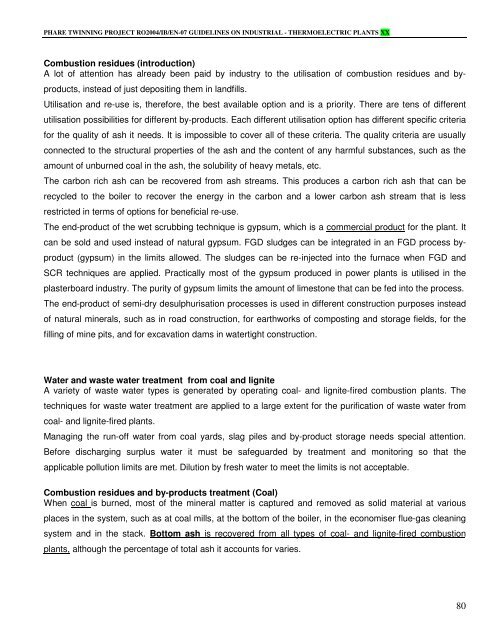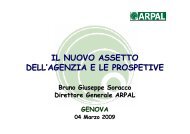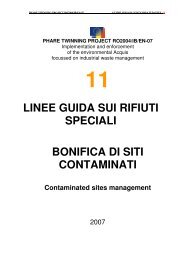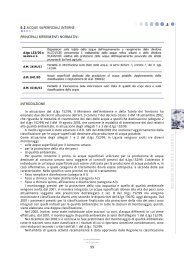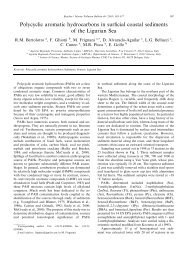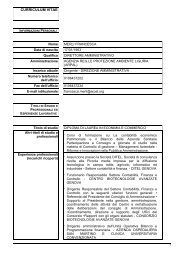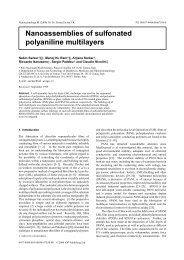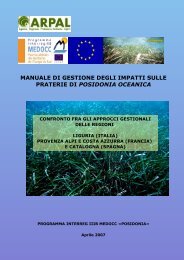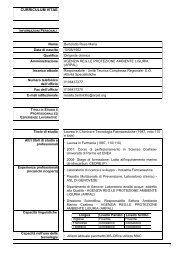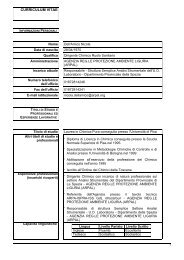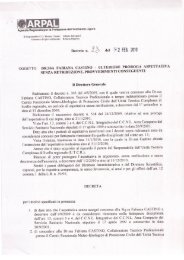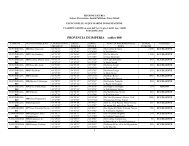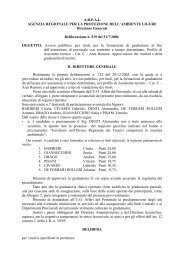Rifiuti da centrali termoelettriche - ARPAL
Rifiuti da centrali termoelettriche - ARPAL
Rifiuti da centrali termoelettriche - ARPAL
You also want an ePaper? Increase the reach of your titles
YUMPU automatically turns print PDFs into web optimized ePapers that Google loves.
PHARE TWINNING PROJECT RO2004/IB/EN-07 GUIDELINES ON INDUSTRIAL - THERMOELECTRIC PLANTS XX<br />
Combustion residues (introduction)<br />
A lot of attention has already been paid by industry to the utilisation of combustion residues and byproducts,<br />
instead of just depositing them in landfills.<br />
Utilisation and re-use is, therefore, the best available option and is a priority. There are tens of different<br />
utilisation possibilities for different by-products. Each different utilisation option has different specific criteria<br />
for the quality of ash it needs. It is impossible to cover all of these criteria. The quality criteria are usually<br />
connected to the structural properties of the ash and the content of any harmful substances, such as the<br />
amount of unburned coal in the ash, the solubility of heavy metals, etc.<br />
The carbon rich ash can be recovered from ash streams. This produces a carbon rich ash that can be<br />
recycled to the boiler to recover the energy in the carbon and a lower carbon ash stream that is less<br />
restricted in terms of options for beneficial re-use.<br />
The end-product of the wet scrubbing technique is gypsum, which is a commercial product for the plant. It<br />
can be sold and used instead of natural gypsum. FGD sludges can be integrated in an FGD process byproduct<br />
(gypsum) in the limits allowed. The sludges can be re-injected into the furnace when FGD and<br />
SCR techniques are applied. Practically most of the gypsum produced in power plants is utilised in the<br />
plasterboard industry. The purity of gypsum limits the amount of limestone that can be fed into the process.<br />
The end-product of semi-dry desulphurisation processes is used in different construction purposes instead<br />
of natural minerals, such as in road construction, for earthworks of composting and storage fields, for the<br />
filling of mine pits, and for excavation <strong>da</strong>ms in watertight construction.<br />
Water and waste water treatment from coal and lignite<br />
A variety of waste water types is generated by operating coal- and lignite-fired combustion plants. The<br />
techniques for waste water treatment are applied to a large extent for the purification of waste water from<br />
coal- and lignite-fired plants.<br />
Managing the run-off water from coal yards, slag piles and by-product storage needs special attention.<br />
Before discharging surplus water it must be safeguarded by treatment and monitoring so that the<br />
applicable pollution limits are met. Dilution by fresh water to meet the limits is not acceptable.<br />
Combustion residues and by-products treatment (Coal)<br />
When coal is burned, most of the mineral matter is captured and removed as solid material at various<br />
places in the system, such as at coal mills, at the bottom of the boiler, in the economiser flue-gas cleaning<br />
system and in the stack. Bottom ash is recovered from all types of coal- and lignite-fired combustion<br />
plants, although the percentage of total ash it accounts for varies.<br />
80


